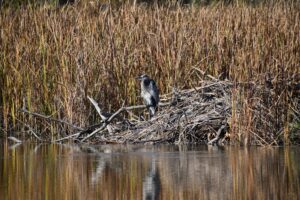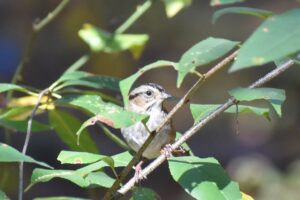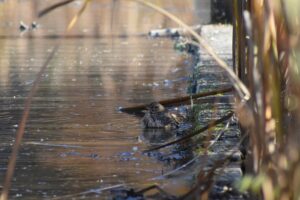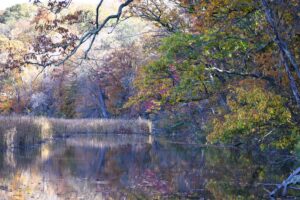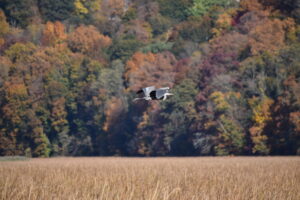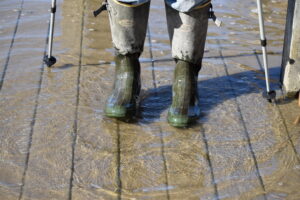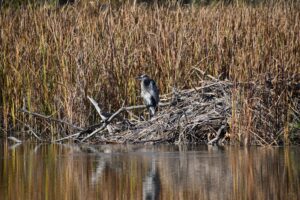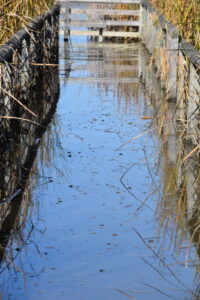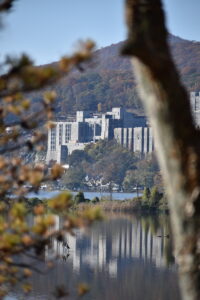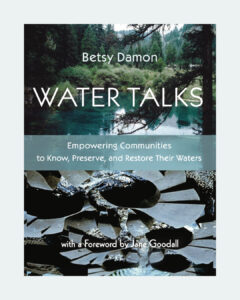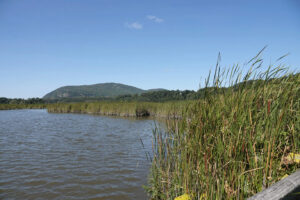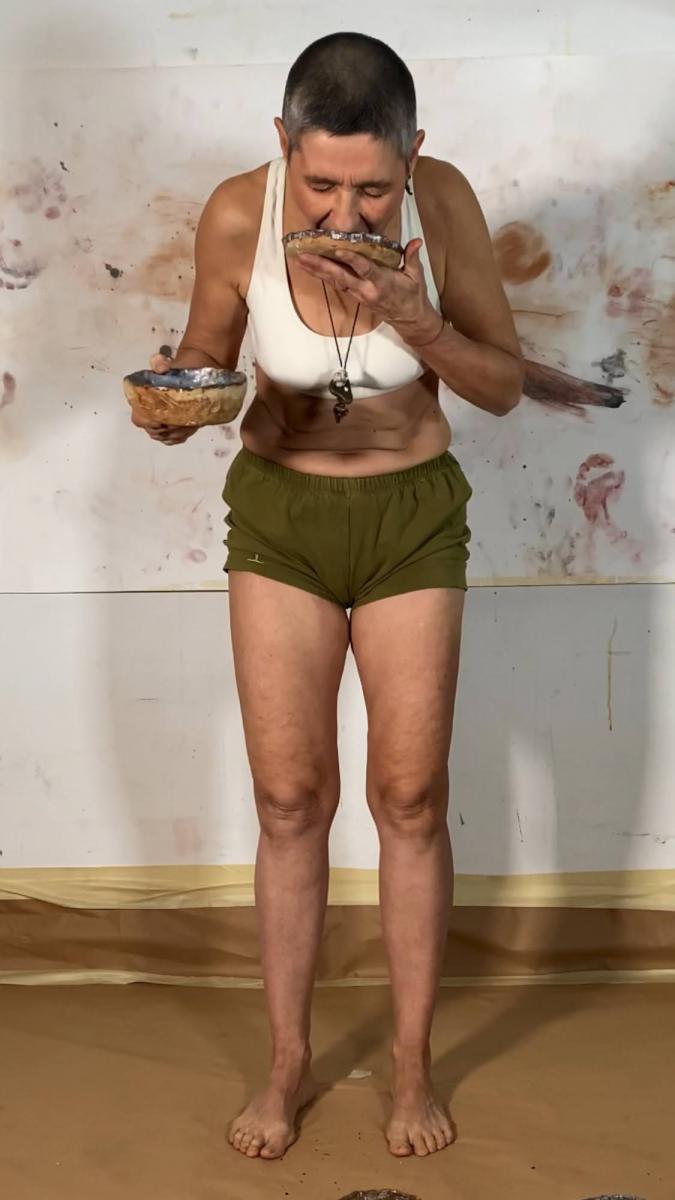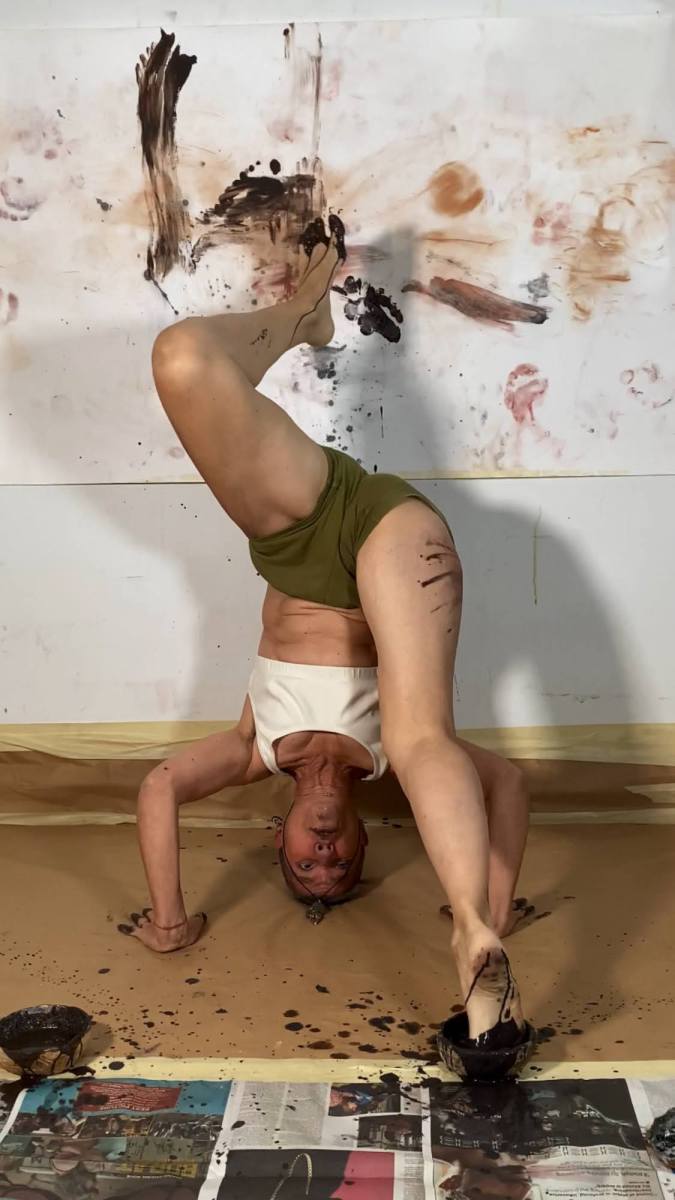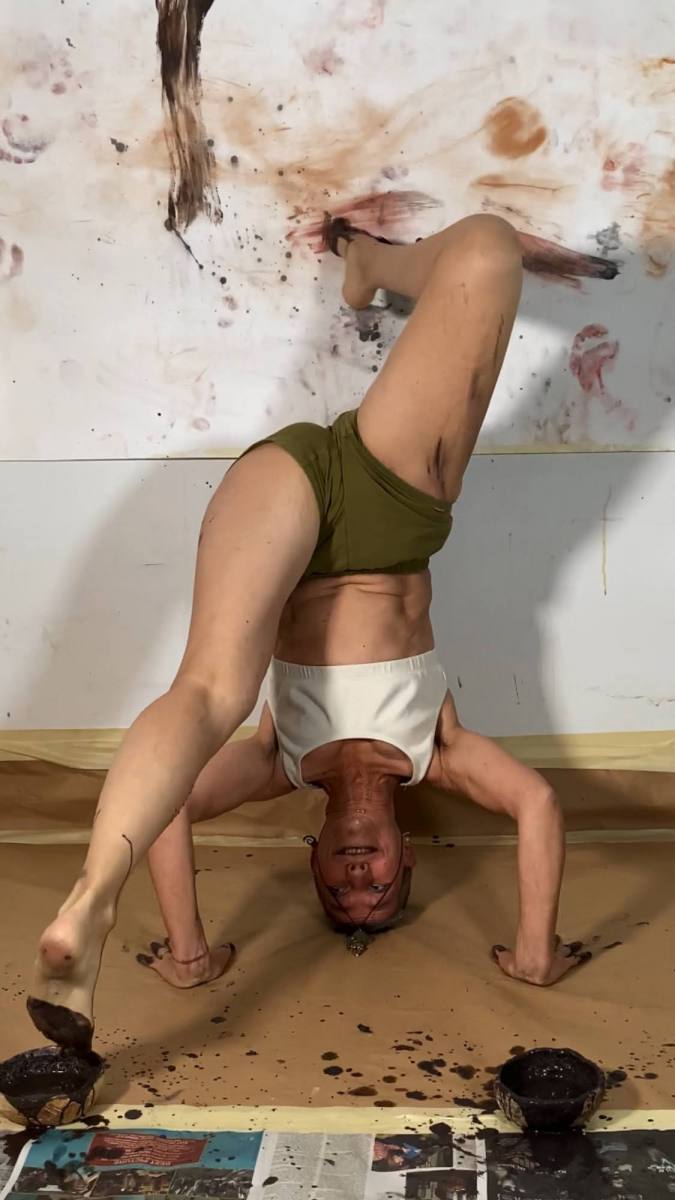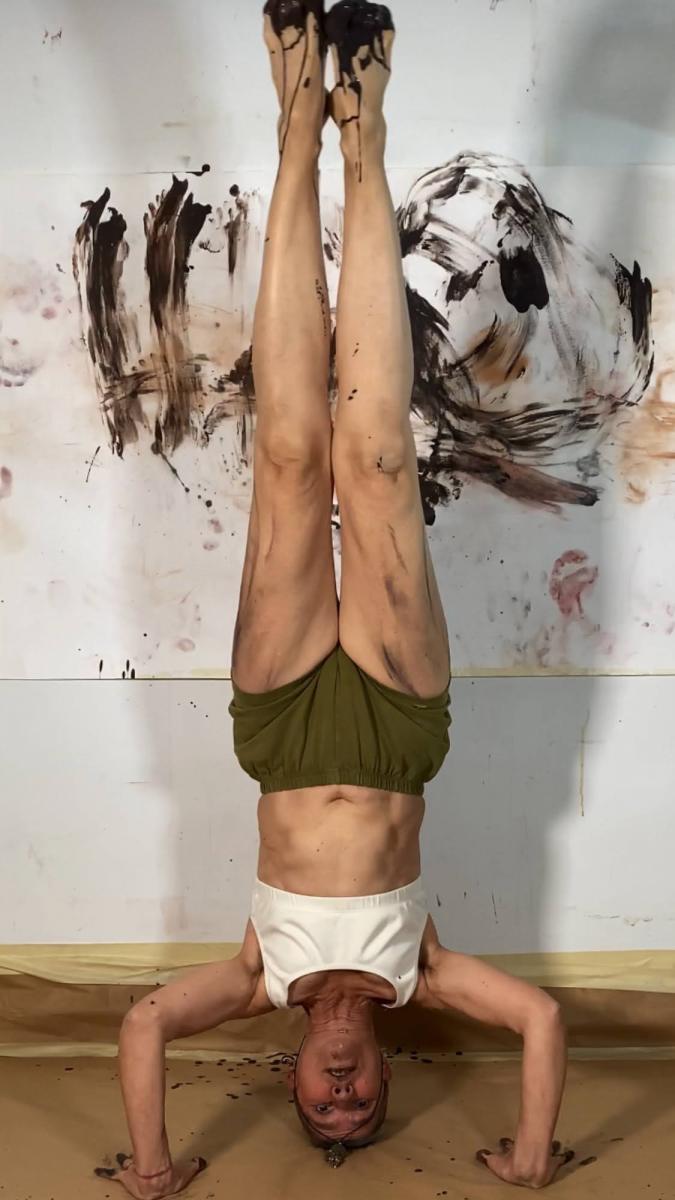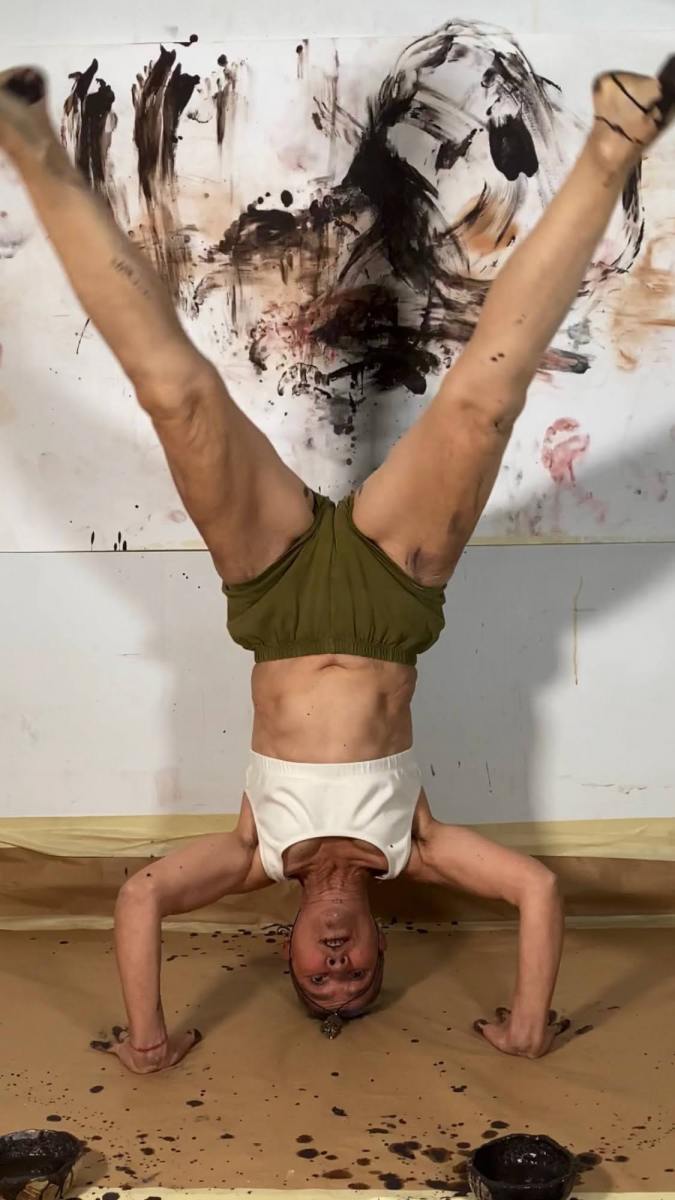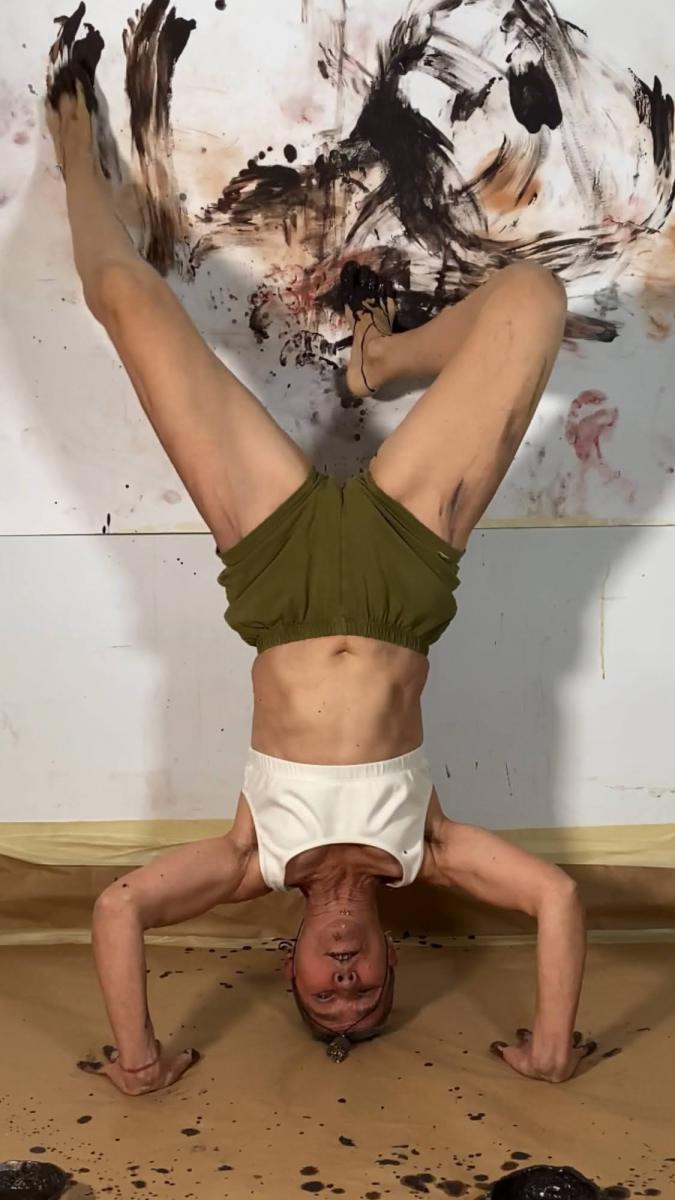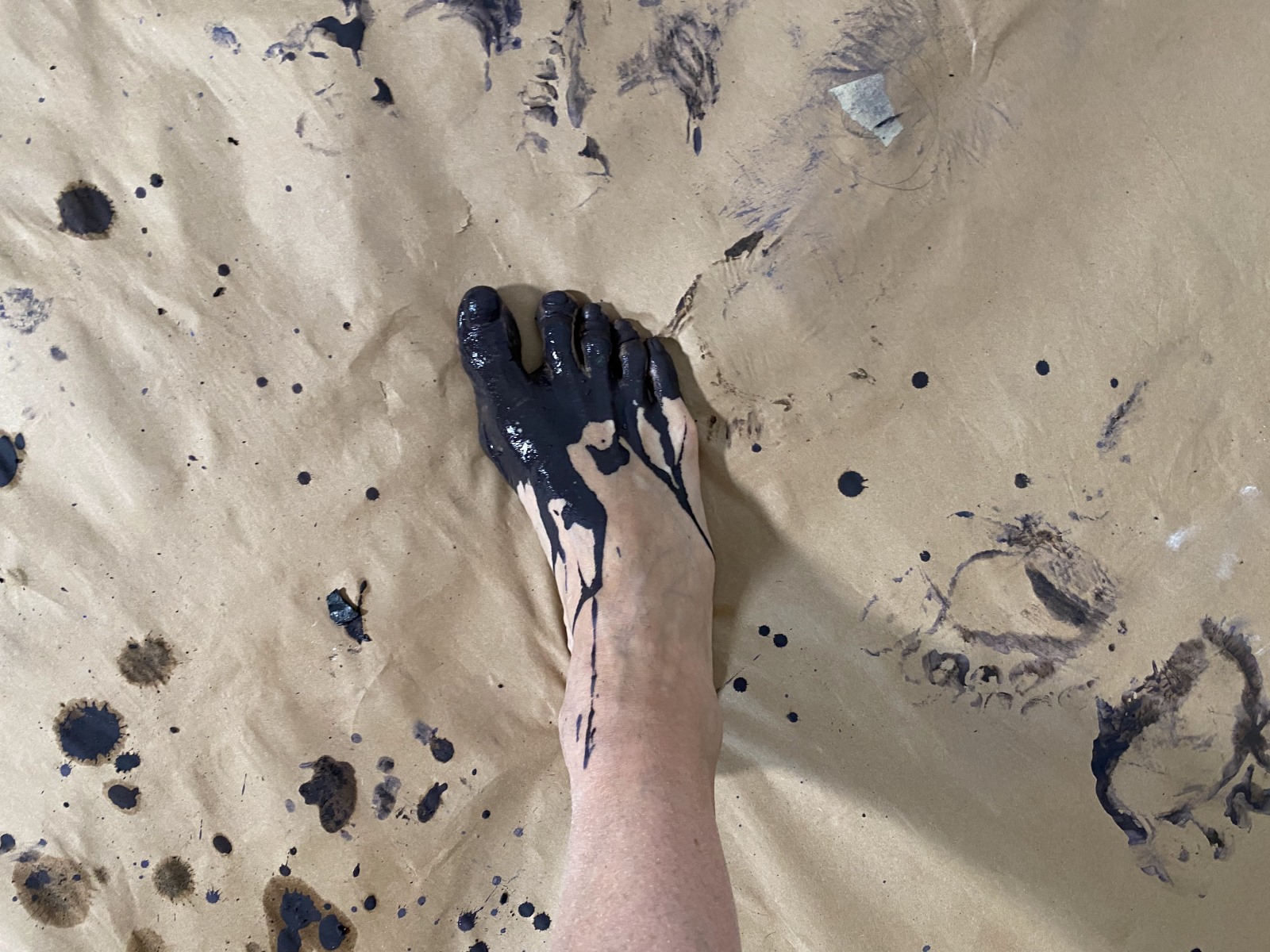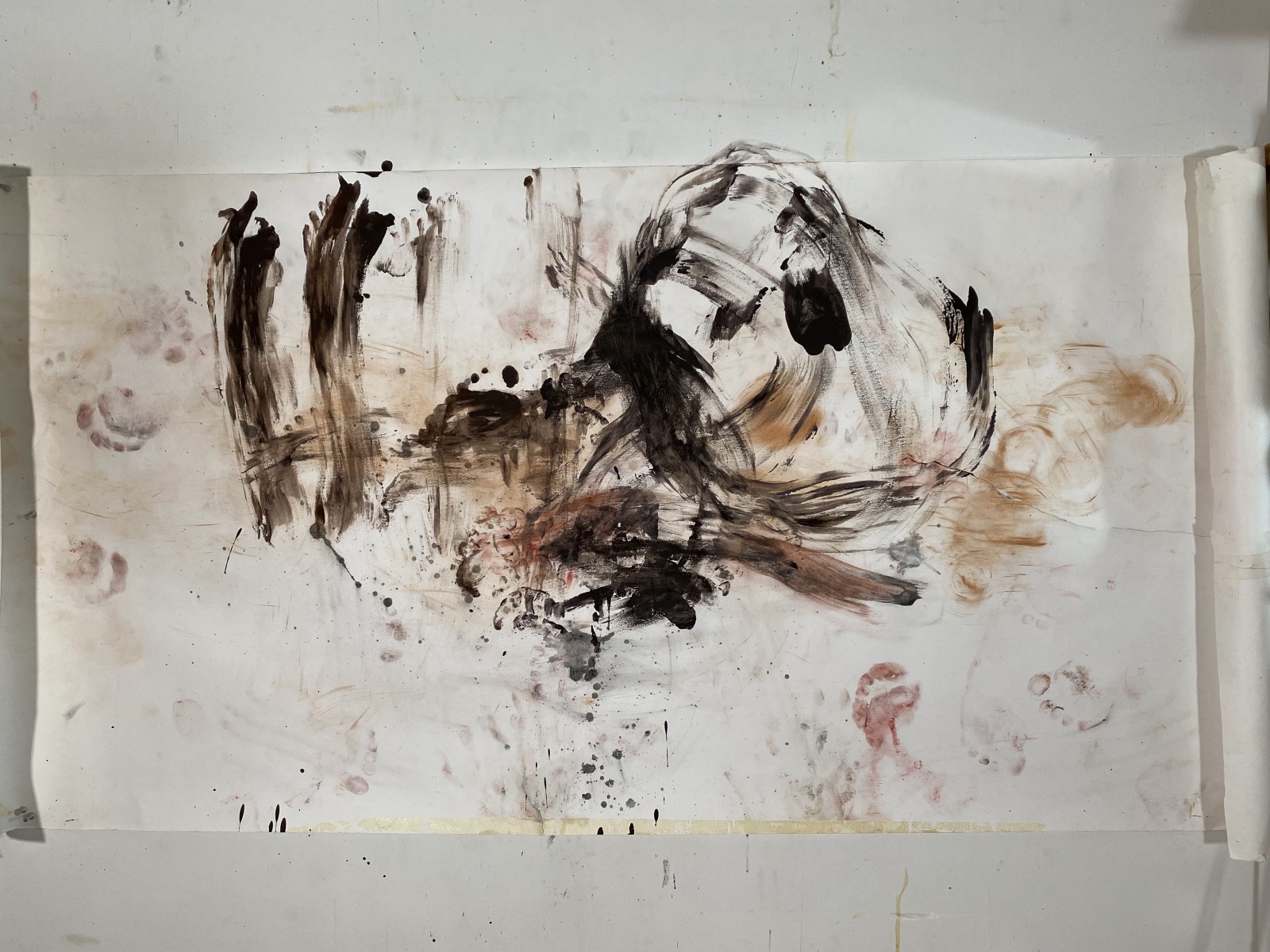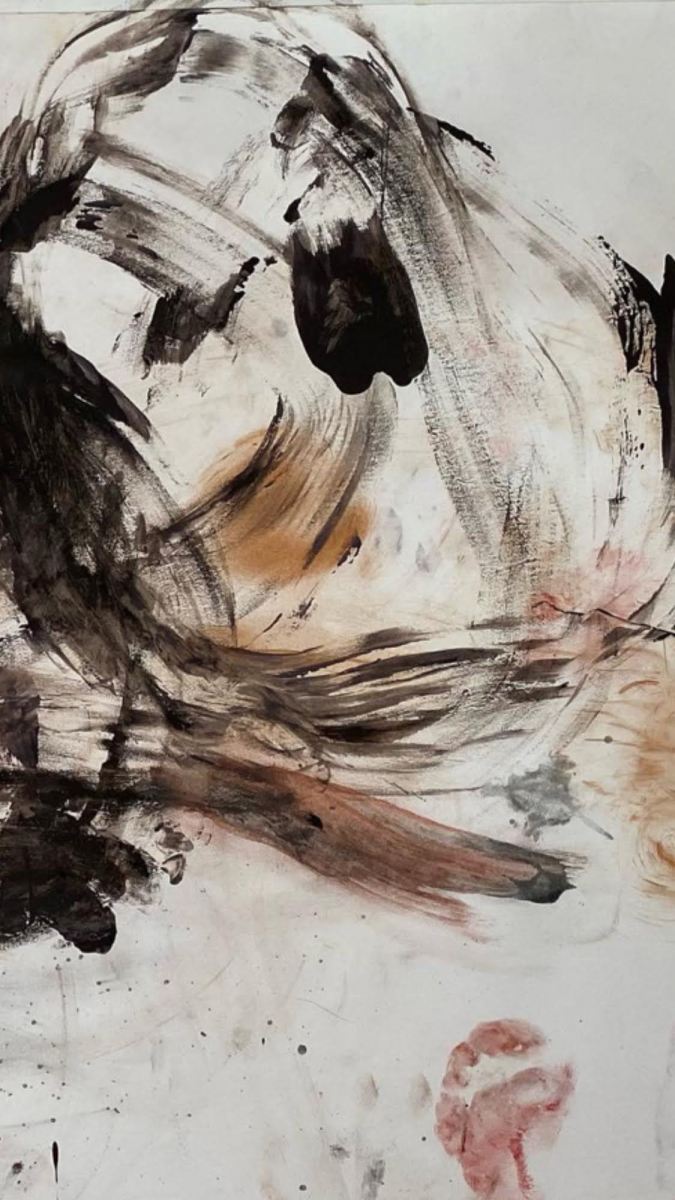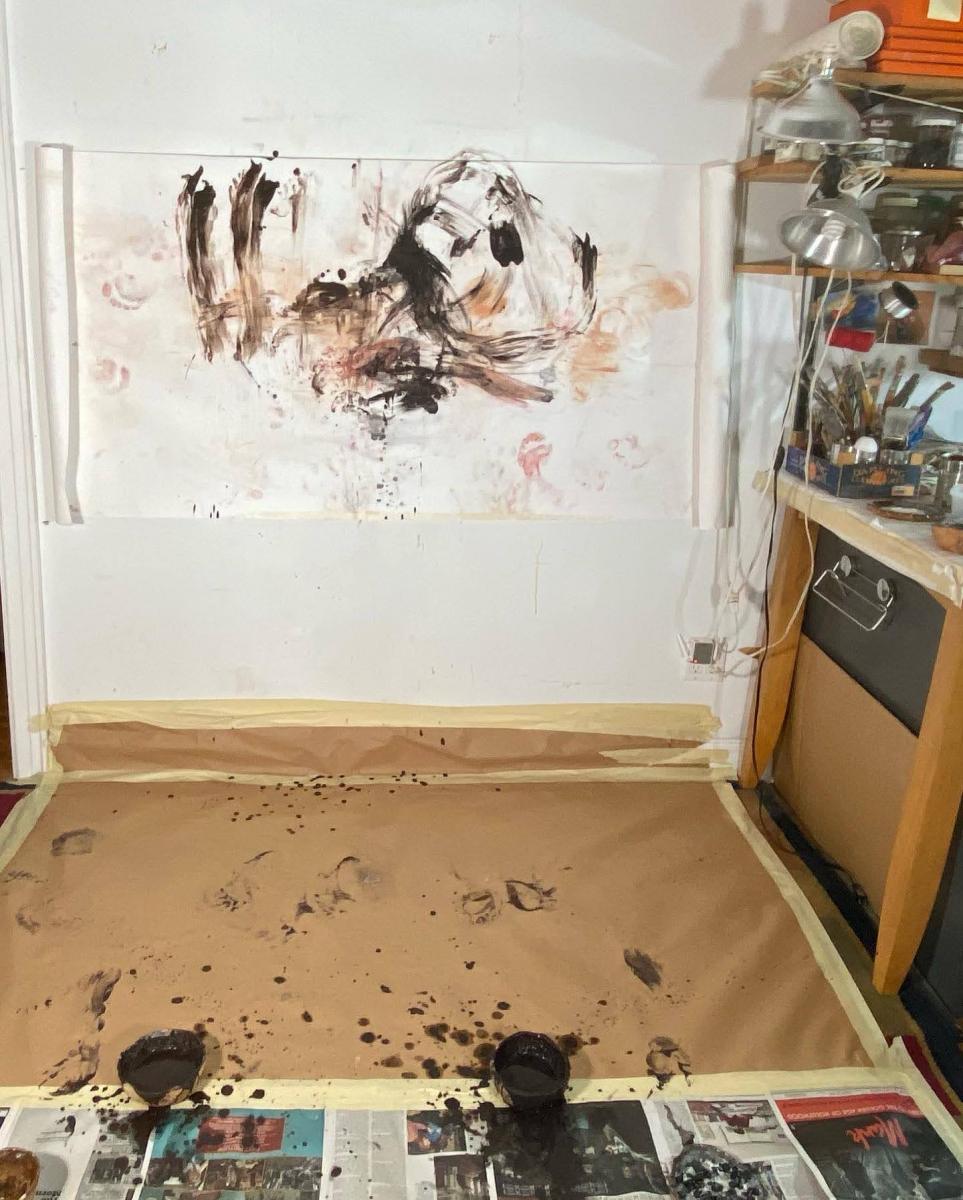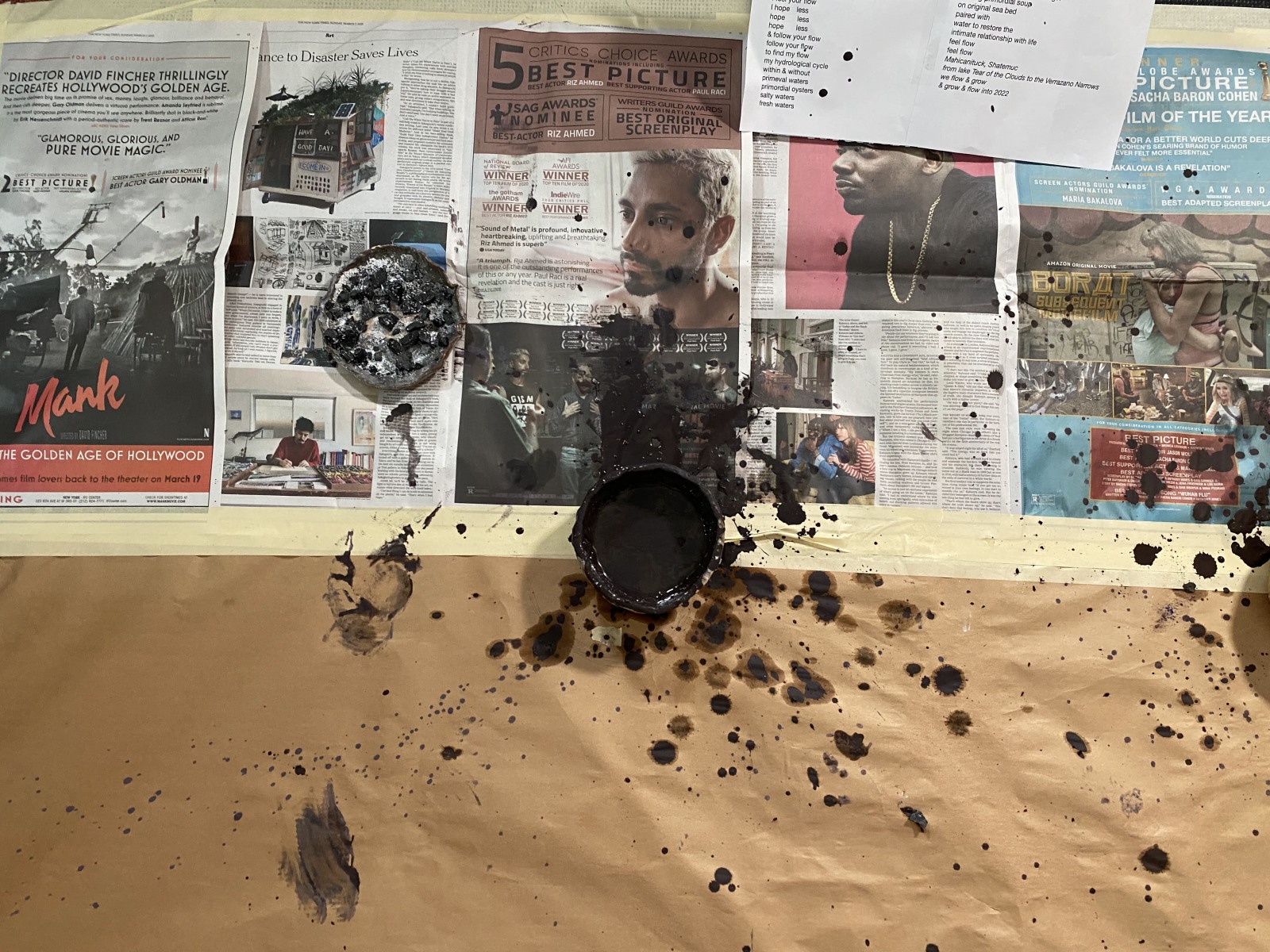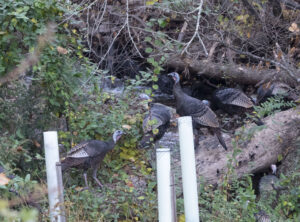 On October 28 2023 I lead a Sympoietic Walk/shop thru Constitution Marsh. We were blessed by a sunny, warm, gorgeous fall day. I left Brooklyn at 7am and after a smooth ride among the fall foliage along Palisades Parkways I arrived early as I wanted to take in the marsh before the group gathered. I was greeted by a dozen wild turkeys, and shortly after by the lovely Lucy Oakes, the Educator-Naturalist of Constitution Marsh. Our group of participants gathered on time in the exhibition room, where a large screen showed my short slide-show introduction before walking up to the trail and embarking on our silent walk. Below is a summary of my presentation and my report of the day.
On October 28 2023 I lead a Sympoietic Walk/shop thru Constitution Marsh. We were blessed by a sunny, warm, gorgeous fall day. I left Brooklyn at 7am and after a smooth ride among the fall foliage along Palisades Parkways I arrived early as I wanted to take in the marsh before the group gathered. I was greeted by a dozen wild turkeys, and shortly after by the lovely Lucy Oakes, the Educator-Naturalist of Constitution Marsh. Our group of participants gathered on time in the exhibition room, where a large screen showed my short slide-show introduction before walking up to the trail and embarking on our silent walk. Below is a summary of my presentation and my report of the day.
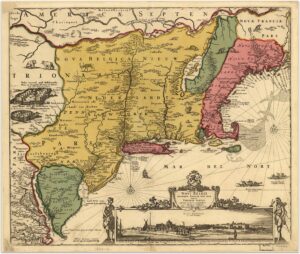
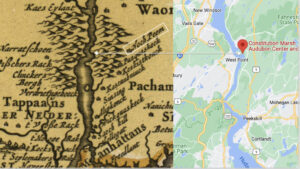
Presentation material & background:
I like to take the term Sympoiesis —or “making-with” — quite literally, so while researching how to present what I thought would be a meaningful land acknowledgment I came across a 1685 map that listed in detail the native tribes of the area.
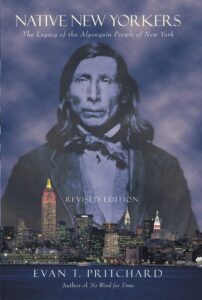 I shared the map with poet Mary Newell, who lives in the area, had introduced me to Constitution Marsh & attended the walk. As we exchanged information around the area Mary shared the land acknowledgment suggested to her by Evan T. Pritchard, a Micmac scholar and author of the must-read book, Native New Yorkers : The Legacy of the Algonquin People of New York.
I shared the map with poet Mary Newell, who lives in the area, had introduced me to Constitution Marsh & attended the walk. As we exchanged information around the area Mary shared the land acknowledgment suggested to her by Evan T. Pritchard, a Micmac scholar and author of the must-read book, Native New Yorkers : The Legacy of the Algonquin People of New York.
“I acknowledge the former inhabitants of this land, the Nochpeem ( a “misty place” sachemdom (nation) of the Wappingers Confederacy, especially the Kestkistkonk people, (prominent sun mountain / principle place near the mountains) who cared for the land around what is now Garrison. I honor their enduring presence and their descendants and emulate their ways of enacting a vital connection to the living earth”
Geological Information:
Even though it was just a quick overview of the geological layout of the region, I wanted to convey a sense of how ancient this land formation is. Constitution Marsh is part of the Hudson Highlands State Park. The bedrock of the Highlands is part of the Reading Prong and more than a billion years old, formed during the Grenville Orogeny. It represents the very core of the Appalachian range, which has been formed by successive mountain-building events (orogenies). The Grenville orogeny was a long-lived Mesoproterozoic mountain-building event associated with the assembly of the supercontinent Rodinia. I have long been fascinated looking at formations that not only pre-date our current earth configuration, but three “shapings” before ours! Also shown on the map is the appearance of fauna & flora, including us in the upper right edge — and not to scale!
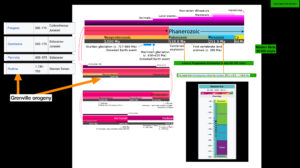
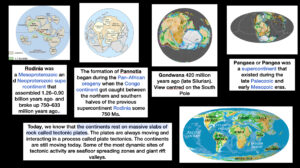
I concluded the short presentation with a few words about the Hudson River, basically reading the slide below. I will expand here on my relationship to the river: I have lived in New York State since 1992 and always close to the River. From 1992-2007 in Albany, N.Y.; then in 2007 I moved to Bayridge, 5 blocks from the Verrazano Narrows and now, since 2009, to a place looking directly at the Narrows. Looking at rivers is always potent and mesmerizing. I grew up at the foot of the highest Pyrenean mountain peaks, and as a child I was spellbound by the streams rushing through my hometown. These loud, powerful streams came from all the way “up there,” i.e., the high mountains weighing down on us and rushing to the Ocean… To the sea! At that time the sea felt so faraway and the rivers’ journey triggered profound feelings of speed, motion and possibilities. Gazing intensely at currents pulled me in, but at the same time out of, what I felt was, a very claustrophobic upbringing & geography. When we would travel to the big town of Toulouse, by car or train, and would cross or drive along the river Garonne, I would ask my mother if it was the same river as “ours”, and she would answer: “Yes! It is, but many tributaries feed it along the way.” To this day I still have vivid memories about carefully drawing all tributaries of the Garonne on my geography notebook in elementary school and grasping that “we” were at the beginning of its 529km (329 miles) journey gave me an insight that never left me.
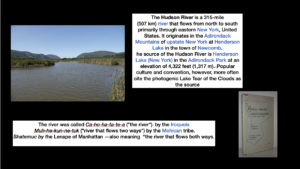
The goal of the walk was for everyone to grasp, receive and make-with this majestic environment, or in other words: to “apprehend” the more-than-human locale in the first etymological sense of the word which is “grasping with the senses or the mind”.
The Walk:
Off we went. My response-ability as the group leader was severalfold. First, to be mindful of the safety of the group. As I mentioned above, our walk was going to be silent, unless there were emergencies. We were a small group and decided to stay together until we reached the boardwalk. Lucy walked out front and I closed the walk. We would point out birds or communicate by simple eye contact & facial expression. Once we reached the boardwalk some of us waded thru the marshes, while others stayed on benches and drew, painted, looked at samples of plants, took photos. I noticed everyone settled with some silent activities so I proceeded to make the full round of the boardwalk, knowing I would get wet. In some areas the water was halfway up my calves so I got wet but didn’t mind.

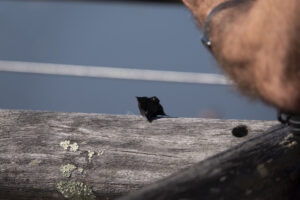
Walking slowly and mindfully through the flooded marshes during peak high tide brought a tranquil internal force. This potent sensation was generated by the Atlantic Ocean’s upstream influx and at the same time by the mighty stream coming down from the Adirondacks. As the tide is felt all the way to Troy NY, the Native names reveal these movements: one Iroquois name is Cahohatatea, “river that comes from the mountains” — most likely above Troy; then it becomes Muh-he-kun-ne-tuk for the Mohicans, Shatemuc for the Lenape of Manhattan and both these names means “river that flows both ways.”
So here I was walking among alevins, varieties of fading and decaying vegetation, above and around crows, a great blue heron, a great egret, cormorants, and many other birds slicing thru the blue sky, all accompanied by the sound track of the gentle breeze thru the cattails and on occasion a very loud intrusion by the Amtrak train and, even more intrusive, the echo of West Point Academy testing out their mikes for whatever event was about to start. I practiced keeping the internal tranquil force, treating the “disturbances”as part of the sympoiesis of the moment.
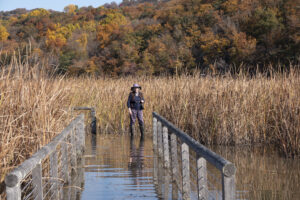
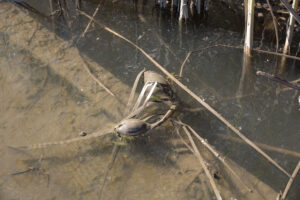
I returned to the group & before hiking back to the center I pulled out my traveling drum & oyster shells for a moment of tuning & toning together. I like bouncing the shell on the drum, I don’t know if it is an ancient custom or not but I started doing it when I played the drum for Betsy Damon’s performance a couple of years ago. Betsy, a very early eco-feminist activist, taught me a lot about water. Every collaboration or visit with her is a teaching moment. In her book Water Talks she writes: “Creativity is an ever-flexible, expansive process available to everyone — not only all humans, but also the entire living universe.” And during lectures and conversation she often repeats: “listen to the water,” “water is our teacher.” So bouncing the shell on the drum becomes a very organic drumming experience, which I can’t really describe. All I know is that the experience integrates my body and my mind the way my Karstic-Actions do (see the Karstic-Action “Be Like Water” here.) I passed the drum around and before we knew it we were all engaged in some drumming or, clapping, dancing in a round, deep breaths in, deep breaths out….all self generated organic movements. We then gathered and took the trail again, still mostly in silence.
Back:
Once we reached the Audubon Center, we regathered around the table after a little personal break and one after the others we shared our experiences.
I am encouraging the participants to write their own accounts (please send it if you want me to publish it or write in the comment box) as I certainly don’t want to speak for them. However, I have a sense from what came out of the conversations that the experience was positive. Remaining silent during the walk was mentioned and appreciated as a factor of switching the energy and allowing a different focus. It does, and it allows to make other sensorial connections that are by-passed by the constant use of language. They also mentioned that they “touched more.” By by-passing language, physical presence & gaze become different. May I suggest that they become literately more mindful? But this is for another essay and to be continued.
I am very grateful to the Constitution Marsh Audubon Center and Sanctuary to have given me this opportunity. Thank you, Rebecca Schultz (director) and Lucy Oakes (Educator-Naturalist and our gracious hosts), Mary Newell who introduced me to the Marsh and last, but certainly not least, to the spirited participants. Their genuine, sympoietic engagement & contribution allowed us to become–with and -through each other.
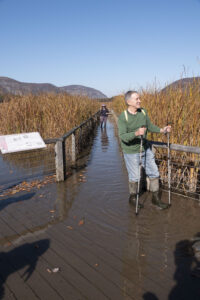
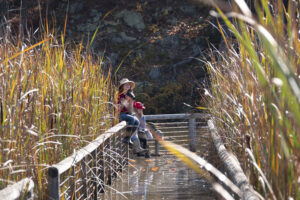
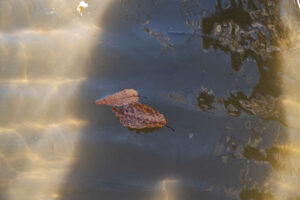
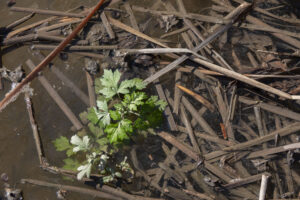

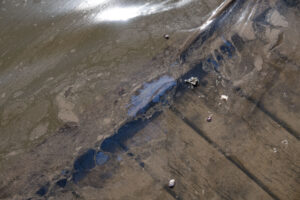

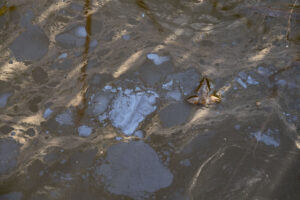
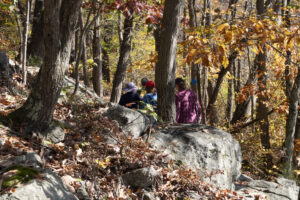
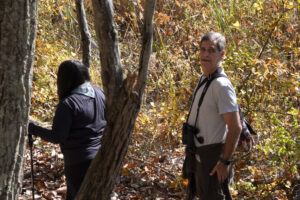
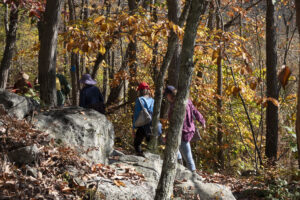
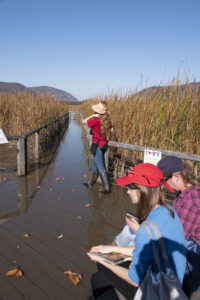
Watching the tide rise
Art work and photos by participants
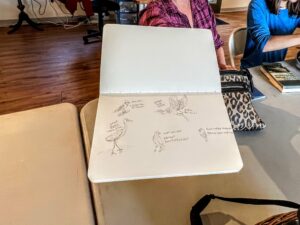
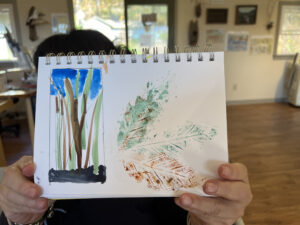
Lucy’s Photos
